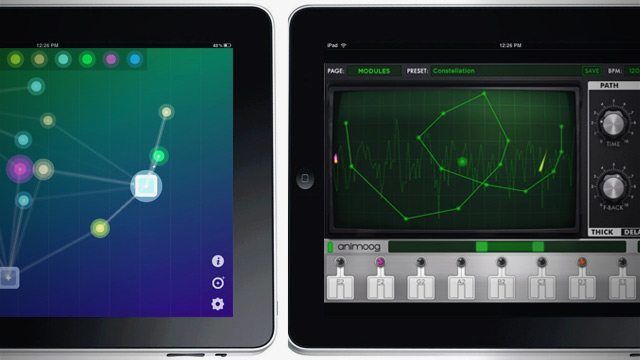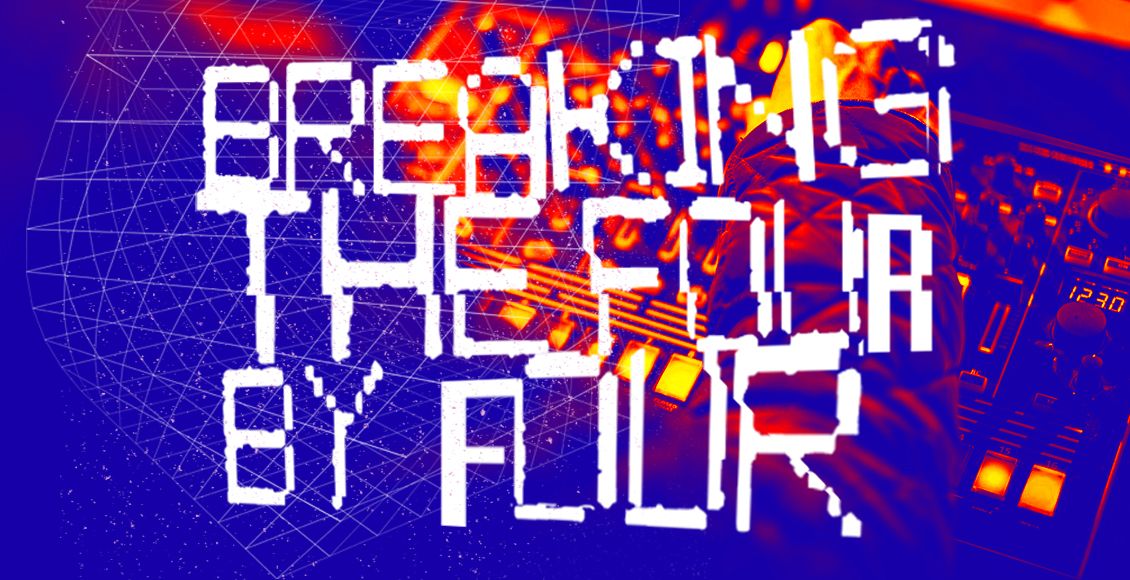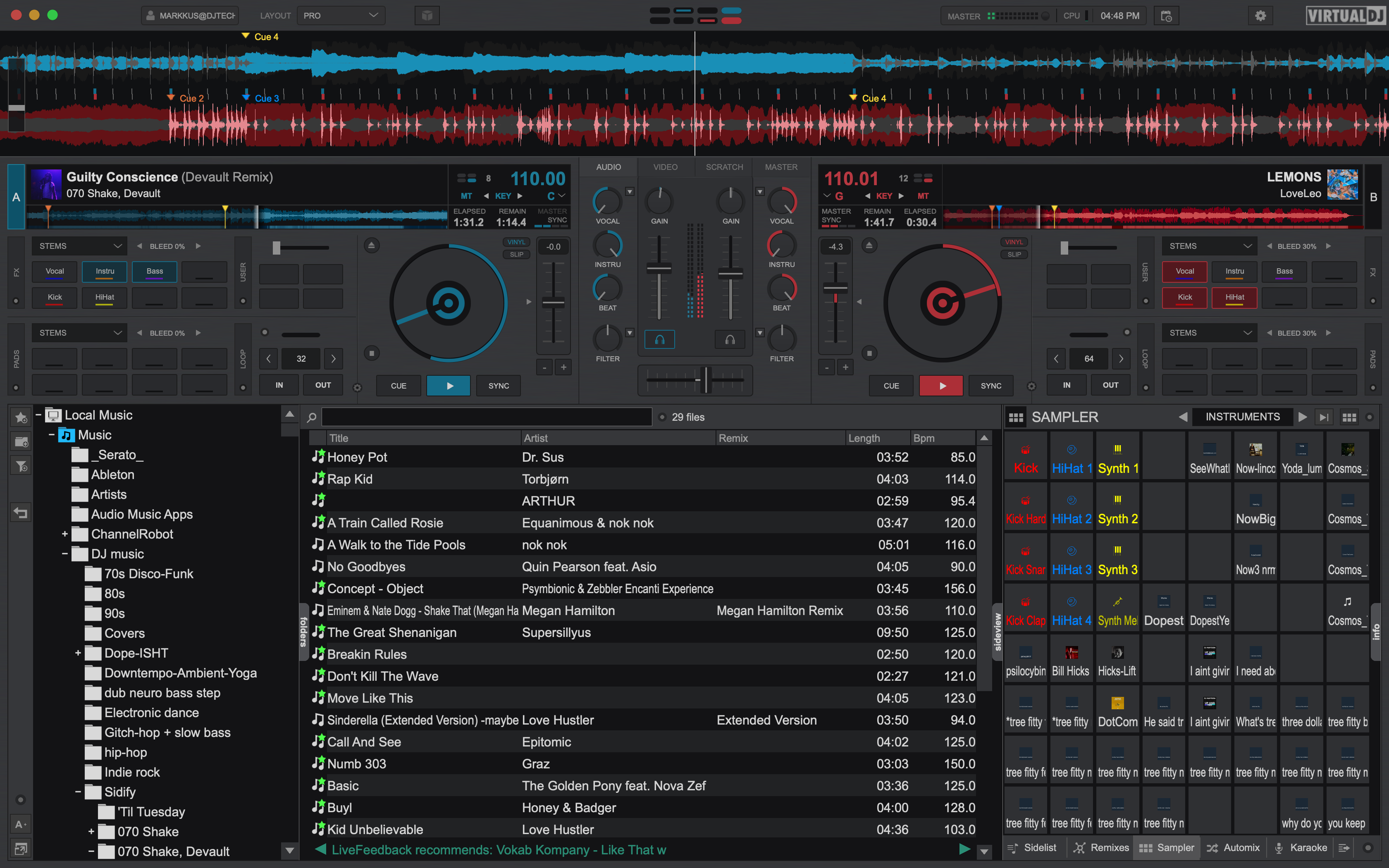We’ve all heard the declarations that the age of physical hardware or controllers is at an end in the production world, and that mobile devices and tablets like the iPad will become the primary way that musicians make music and perform it live. But how realistic is this claim? Today, we’ve asked an expert in the iOS live production and performance world – Rheyne – to share some of the apps that make jamming on an iPad more fun and significantly cheaper than buying a ton of analog hardware. Read on to see what’s worth picking up – and to enter a contest to win one of the apps mentioned!
Were you linked here just to win some iOS apps? Feel free to jump to the giveaway entry by clicking here.
WHY PRODUCE OR PERFORM WITH IOS?
Having played piano and other keyboard instruments for most of my life, but only been using iOS apps since Dec 2011, I’ve given equal attention over the years to both hardware and software instruments, realizing both have their strengths and weaknesses. To my ears, playing sawtooth wave on my Moog Prodigy with the filter fully open, and playing a sawtooth wave from NI’s Reaktor, it’s hard to tell them apart. You can assign knobs and sliders from a controller to the various synth parameters in something like Reaktor, giving me an approximation of that hardware synth feel.
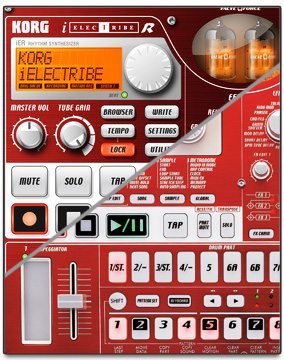 There are inherent differences in real analog keyboards vs. software instruments which justify owning both, and I couldn’t be more than thrilled at the recent uprising of the affordable “new wave” analog instruments from companies like DSI, Moog, Arturia, and Korg. However, being an owner of keyboards which were manufactured before I was born, all I can say to the hardware purists is if you haven’t given iOS music apps a spin, you have no idea what you’re missing. It took a lot of convincing for me to give it a try, since I was never an “Apple guy” and still stick to my PC roots. But when I was given an iPhone as a birthday present a couple of years ago, I really started to see how smooth and expressive music apps were becoming.
There are inherent differences in real analog keyboards vs. software instruments which justify owning both, and I couldn’t be more than thrilled at the recent uprising of the affordable “new wave” analog instruments from companies like DSI, Moog, Arturia, and Korg. However, being an owner of keyboards which were manufactured before I was born, all I can say to the hardware purists is if you haven’t given iOS music apps a spin, you have no idea what you’re missing. It took a lot of convincing for me to give it a try, since I was never an “Apple guy” and still stick to my PC roots. But when I was given an iPhone as a birthday present a couple of years ago, I really started to see how smooth and expressive music apps were becoming.
Before we get started, here’s an exclusive video made just for this article – a performance with iOS tools. It’s a live looping improv jam using the DJ TechTools Midi Fighter 3D for note input, and a KMI 12-Step for live looping in Ableton. The four banks of the MF3D are controlling four separate instruments: Native Instruments Kontakt for drums, NI’s Massive for bass, Sunrizer on an iPod Touch, and Animoog on an iPad.
The tilt of the MF3D is controlling separate low-pass filters on the drums, bass, and pad. While controlling Animoog, the tilt controls the orbit time and rate of the path of the “ball” on the XY grid. Physynth’s image and audio output is being sent wirelessly to the left display, and the display’s audio output is being sent to the PreSonus 1818VSL. Animoog is wirelessly receiving MIDI from Ableton Live, with a wired connection to the center monitor. Lemur (displayed on the right monitor) is wirelessly controlling filters, effects, and track volume in Ableton Live. All loops are recorded live, nothing was pre-recorded.
THE KILLER LIST OF 14 iOS PRODUCTION APPS
In this article I’ll share a few of my favorite apps – I want to make it clear that this is a list based on my own personal experiences and these are my own opinions on how I apply their functions. None of the developers know I’m writing about them, and I did not receive a “free code” to include them in this list. I paid for all of these, and use them regularly.
(Editor’s Note: DJTT reached out separately from Rheyne’s writing of this list to make an awesome contest to give away a copy of each of these apps – enter at the end of the article or by clicking here!)

Lemur
Price: $49.99 in the App Store
Dissatisfied with the layout of a lot of MIDI controllers on the market? Being able to design your own custom MIDI controller is very appealing, especially with the ability to make something customized to the shape of your own hand. The physics engine allows you to bounce any object around the screen infinitely, giving you the ability to apply subtle or drastic continuous modulations to anything receiving MIDI CC input. With the recent release of LiveControl2, Lemur can be a fully-blown animated and expressive tempo-synced musical tool for Ableton Live, similar but different than Push, and with great integration of the physics engine. Lemur will make you wish for a 27″ iPad. $50 is a no-brainer for this app, especially when you compare it to the price of dedicated hardware controllers. It’s worth the price for LiveControl2 alone, even if you never customize a single thing.
 Animoog
Animoog
Price: $29.99 in the App Store
Animoog might take a while to figure out, but after a couple of YouTube tutorials it starts to make sense. Horizontal rows within the XY grid on the main page is where the sounds for your patch reside. The app lets you scroll through any or all of those rows of sounds by giving you the ability to draw a path through them, triggered by pressing a key. The speed and “orbit” of this path can be controlled by various modulators like LFOs and even the XY gyro in the iPad itself. Animoog gets interesting with its “poly-pressure” vertical keys, where sliding your finger up and down a key is actually an assignable modulator. There’s a lot of great presets utilizing the poly-pressure keys, and you’ll only need to scroll through a few of them to hear how expressive of an instrument it can be. As with all synth apps, you should use headphones or plug in a pair of speakers, as the built-in speaker does not do it justice at all.
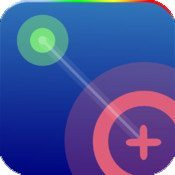 NodeBeat
NodeBeat
Price: $1.99 in App Store / $1.98 on Google Play
NodeBeat is not only pretty to look at, but it becomes a very powerful controller when used to trigger external instruments and plugins. It can transmit 8-step patterns across four separate MIDI channels in various scales, and the unused surface can be played like a keyboard which can transmit on an additional fifth MIDI channel. I had NodeBeat wirelessly triggering a Dave Smith Instruments MoPho, a polyphonic pad from NI’s Massive, a second monophonic instance of Massive, and drums from NI’s Kontakt, all with zero issues. It was interesting for me to hold something which was wirelessly controlling so many instruments in Ableton at once, including a separate hardware synth, all in sync and with a very elegant and visually-appealing interface.
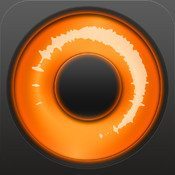 Loopy HD
Loopy HD
Price: $7.99 (HD) for iPad / $2.99 for iPhone/iPod
Loopy is an excellent live looper for iOS, with great flexibility over meter and bar length on each loop. There’s also lots of fine-tuning controls and mixer functions unveiled when pressing on a track, all in a very sleek and clean interface. It can be fully controlled with external MIDI controllers including footswitches, and it’ll accept input from the internal mic (if equipped), a headset, external instruments, or another app running in the background (via Audiobus). Dub Fx made a video demonstrating it, so that should really be all the convincing anyone needs if anyone’s in to live looping.
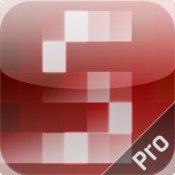 SoundPrism Pro
SoundPrism Pro
Price: Free version on iTunes / $4.99 for Pro
SoundPrism Pro is another app which becomes very powerful when used as a MIDI controller, and it can transmit notes on two channels at once. Although I’ve seen amazing SoundPrism YouTube vids with single-note playing, I’ve mainly been using it to experiment with different chord combinations and progressions. Your root notes are stacked in thirds, and you can change the notes by a half step in each direction to customize the scale. When set to trigger 3-note chords, you can start stacking thick and complex “7” and “9” chords with just two fingers, even with little to no understanding of music theory. It’s not completely automated and you still have to “play” it to make it sound good, which is what I like about it, and since it can control hardware or software instruments via MIDI, it’ll sound as good as your best hardware and software already sounds.
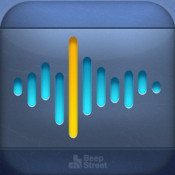 SunrizerXS Synth
SunrizerXS Synth
Price: $9.99 (iPad only) on App Store
Sunrizer is a re-creation of a favorite Roland synth, the JP-8000. It’s a virtual analog synth, and in my opinion the app’s output resembles a piece of hardware like the JP-8000 / 8080, with a clean warm sound Roland has been known for. It tracks perfectly with any MIDI controller, the MIDI-learn feature is easy to use, and its effects sound great. I’ve been using this as my main polyphonic pad instead of Massive lately, because it’s easier to tweak something directly instead of going back to the computer each time, but that’s not at the expense of sound quality – Sunrizer sounds superb. The LFOs can be routed almost anywhere, and the filter is excellent. To top it off, you can morph between two snapshots of the panel smoothly and seamlessly.
 WaveGenerator
WaveGenerator
Price: $19.99 in App Store
WaveGenerator is a wavetable synthesizer developed by Wolfgang Palm, the inventor of the original PPG Wave keyboards. Released after Moog’s Animoog, familiarity with that synth helps the transition to WaveGenerator, since key presses can be set to cycle through banks of waveforms, like Animoog, but to say it goes deeper than that is an understatement. Custom waveforms or “spectra” can be drawn directly on the screen and immediately played, and the app even has the ability to convert a picture in your camera roll into playable spectra. This is another app where I felt like I was in way over my head, but after watching Wolfgang’s personal tutorials and some other YouTube vids, it started to make sense. It has a lot of power for the price, and is a truly deep and complex synth with a wide range of sounds containing lots of layers, details, and high-pitched twinkly textures.
 Rebirth
Rebirth
Price: $14.99 in App Store
For anyone who experimented with virtual software instruments since their initial “mass market” release in the late 90’s, Rebirth is a household name, and the direct predecessor to Reason. During that time, Propellerheads was such a small company they were being distributed by Steinberg, who had also unveiled their first free virtual instrument “Neon” before Cubase was rebooted back to version 1 / SX. It was also one of the first programs to support ReWire, which let you output your entire session across multiple channels in Cubase. Rebirth contained great emulations of a TR-808, TR-909, and a pair of TB-303 “rack modules” linked by a master sequencer. The iOS version of Rebirth is the EXACT SAME THING, right down to the opening demo preset when you first press play. It’s been optimized for touch, and there’s now a new “duo” mode which splits the screen to let two people jam at once, and contains other iOS improvements to its predecessor like easier sync’ing and AudioCopy.
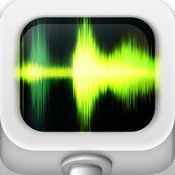 Audiobus
Audiobus
Price: $4.99 in App Store
Audiobus lets you use apps together like a virtual patch bay or mixer. Your input can be as basic as the internal microphone on your iPhone, and you can run that through something like Moog’s filter and then record the output into something like Loopy. People who’ve experienced stuttering are often not realizing they’re overloading their device the same way you can open too many plugins in a DAW. If you’re running Animoog, Sunrizer, Rebirth, Loopy, and playing a 12-voice pad on Sunrizer with an arpeggio in Animoog, it’s going to choke but that’s not because of Audiobus, it’s just a maxxed-out CPU. iPad 4 owners are naturally going to be able to run more simultaneous and more CPU-intensive apps than iPad 2 owners, so it’s important to experiment with different combinations to find what works best on your hardware.
 iElectribe
iElectribe
Price: $19.99 in App Store
iElectribe is another throwback app, offering an exact recreation of Korg’s Electribe “R” groove box, one of the most widely-used pieces of hardware in electronic music for almost 15 years. The app syncs via WIST, but has also been updated with full CoreMIDI support, so you can not only send it note data and CC messages to control its front panel, but it’ll also sync to an external MIDI clock. I like sending MIDI loops to synths instead of recording audio loops to tweak their front panel to alter the sound while the synth is playing, and since iElectribe receives MIDI clock, it’s great for realtime tweaking in a live jam with other instruments.
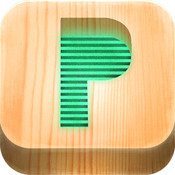 Physynth
Physynth
Price: $0.99 in App Store
Physynth is difficult to describe without seeing it. Thanks to games like Portal and Angry Birds, physics games are more popular than ever, which gives me hope for the human race by showing we demand more than just button mashing. Physynth lets you create a space where a bouncing balls impact on this space’s walls generates a sound. The bouncing ball is created within this space when you press a key, and you can have four separate “modules” running at once. These spaces or 2D structures have as many walls or openings as you desire, and each wall can create new notes as balls bounce on them, or sustain them, or stop notes entirely. The properties of the balls can be altered by adjusting gravity and the amount of bounce / rebound.
Physynth has a lot of latency and can’t be used for precisely-timed notes, but that’s not what it was invented for, and needs to be seen for what it is. The graphical interface is one of the most impressive to look at when compared to other apps, resembling high-end 3D graphics (the app “tilts” as you tilt the iPad) and has a steampunk / vintage interface you’d find in a video game like Fallout or Borderlands. With four separate modules or “spaces” to assign sounds and patterns, this really becomes a great atmospheric soundscape tool, especially when running through external effects like reverb or played through a good filter.
 Geo Synthesizer
Geo Synthesizer
Price: $9.99 in App Store
Geo is yet another app that’s potential is not truly realized until it is used as an external MIDI controller. It’s the predecessor to the keybed / pad layout of Ableton’s Push, and offers a playing surface of chromatic notes with horizontal rows separated by 4ths, similar to a guitar player’s perspective. Also like a guitar, you can bend notes and apply vibrato the same way a guitar player bends strings, and those subtle pitch bends will transmit over MIDI, wired or wirelessly. The grid is resizable and the response is excellent.
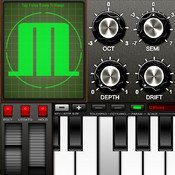 Magellan
Magellan
Price: $6.99 in App Store
Magellan is another great-sounding virtual analog synth. It also offers two sets of keyboards with either traditional keys or a touchpad where vertical swipes on each key zone will transmit a modulation or CC, similar to Moog’s Animoog. The main strength is its ability to run two instances of the synth engine which can be used simultaneously with completely different settings on each, either in unison or on separate MIDI channels. MIDI works perfectly, and the synth is stable, punchy, and as clean or as dirty as you’d like it to be.
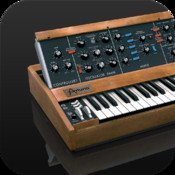 iMini
iMini
Price: $9.99 in App Store
iMini by Arturia is a recreation of the Minimoog, complete with its hardware predecessor’s arguable “limitations”. It’s a 3 oscillator synth, but to do any sort of pitch or filter modulations, they all need to be controlled from the 3rd oscillator, knocking your patch down to only two sound sources instead of three. This is where people usually feel it’s limited (along with Moog’s consistency in offering only a 3-stage envelope instead of 4 in that era) but to me, a great advantage of using an oscillator as your LFO is you can get much higher into the audio range than a conventional LFO will typically let you, even if that LFO has a “high” setting.
The filter has quite a unique sound when being modulated by Osc 3 in the 8′ or 4′ position, similar to the sounds you’d only get in a modular system where you’re using a separate oscillator as your LFO. Moog is known for their simplicity, especially in synths from that era (my Moog Prodigy is about as basic as you can get) and this is no exception, but being able to use an oscillator as your LFO is very powerful and you’ll be able to create sounds a traditional LFO would never be able to create. It’s great for dialing-in all your traditional synth sounds without needing to flip pages. Page-flipping is necessary for deep, complex routings and effects, but that’s not what this is, and doesn’t need to be or it wouldn’t be a Minimoog re-creation. It sounds awesome, too.
TABLETS ARE THE FUTURE?
Playing on a smooth piece of glass is a very unique thing, especially to a keyboard player who’s used to the hammer-action and sensitivity of a key or pad. Many app developers have utilized the glass as a way to offer a unique and expressive way of playing an instrument, rather than just sending a simple note-on / note-off message. And the affordable price point is a huge bonus – yes, a synth app will cost more than a copy of Angry Birds, but they cost significantly less than a stand-alone virtual instrument for MAC/PC which could run anywhere from $100-200 or more. If you’ve already shelled-out $500 or for an iPad, another $20-30 for a synth app from Moog or Wolfgang Palm is a steal.
Here’s hope this gives you a little inspiration to give a few of these a try, or to give them another try if you already own them but grew frustrated at their complexities when you first bought them. As mentioned, the “hardware only” guys and gals are really missing something if you don’t give a few of these a try, and this is coming from an owner of both modern software as well as keyboards manufactured before my birth!
Can’t afford all of the apps above? We’ve teamed up with some of the app developers above to give out two free copies of each of the apps mentioned. Enter below with a simple Facebook like or Twitter status update (1 entry for each action – including each friend you refer to read this article and enter!):


